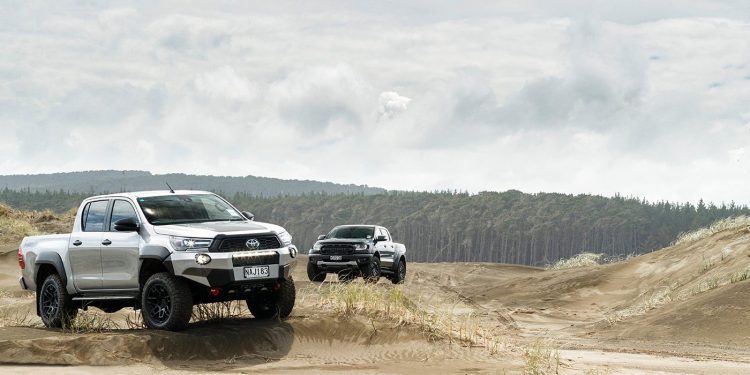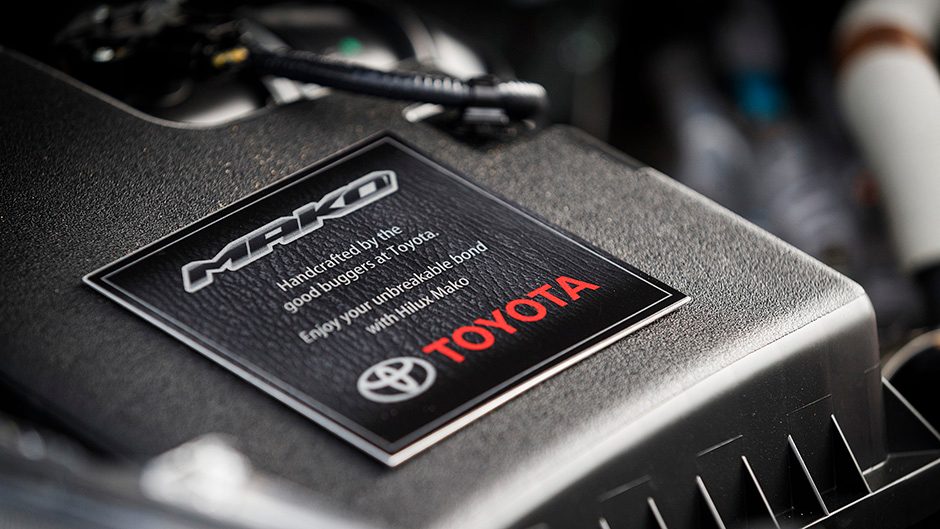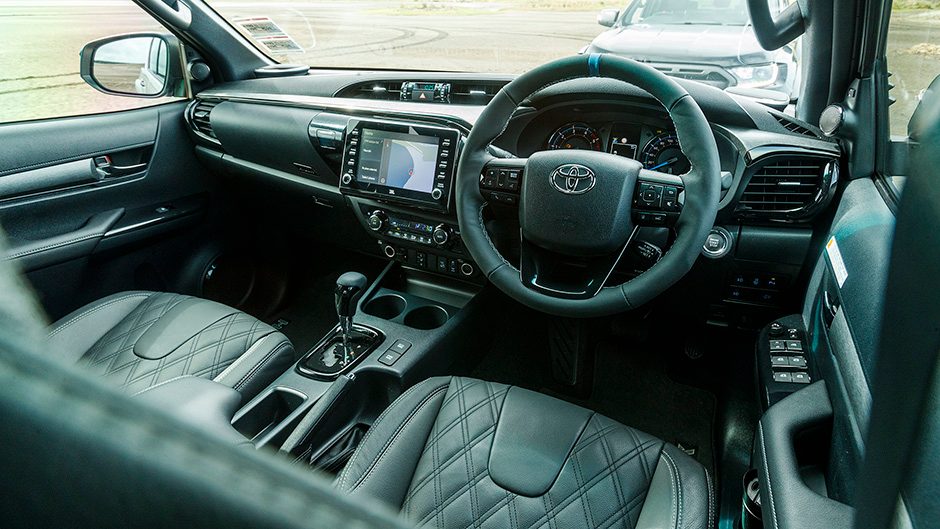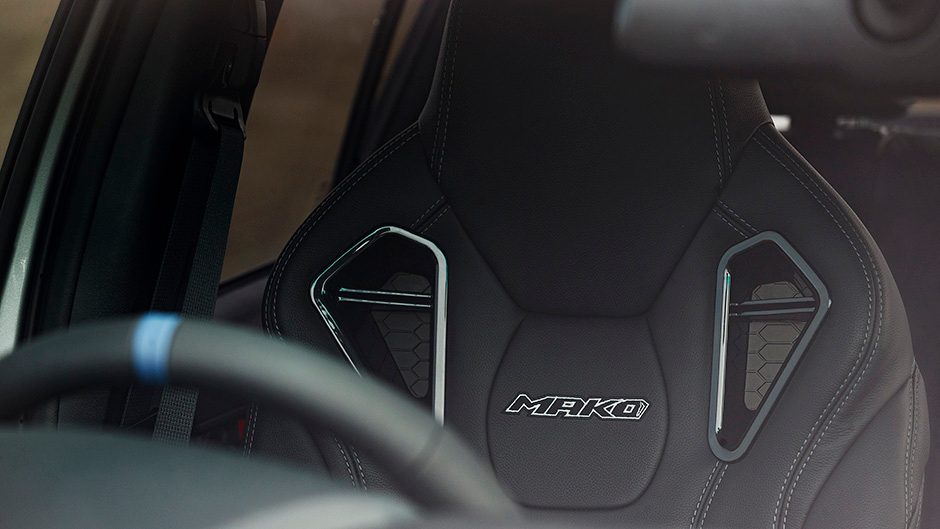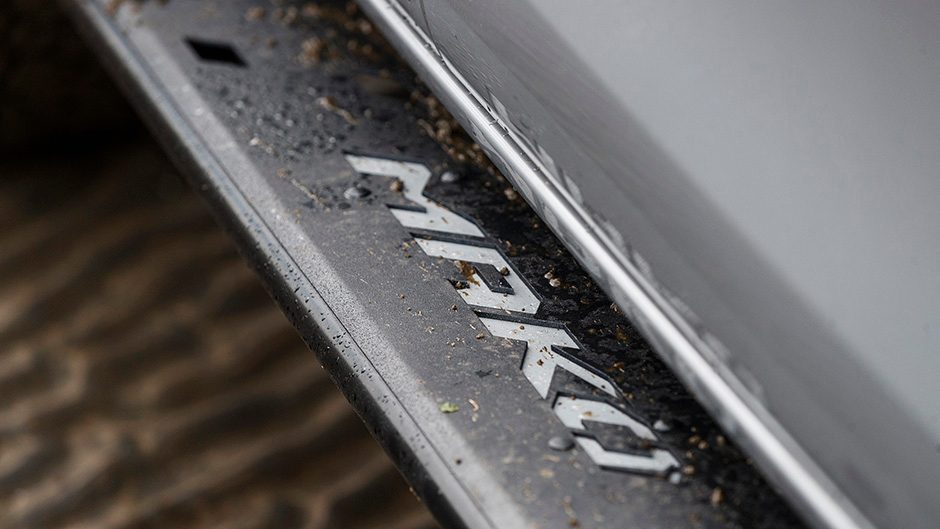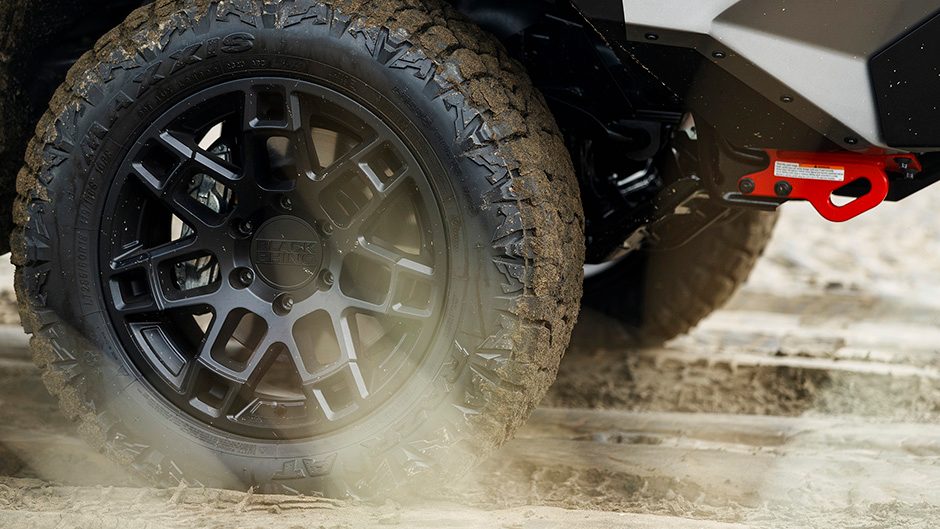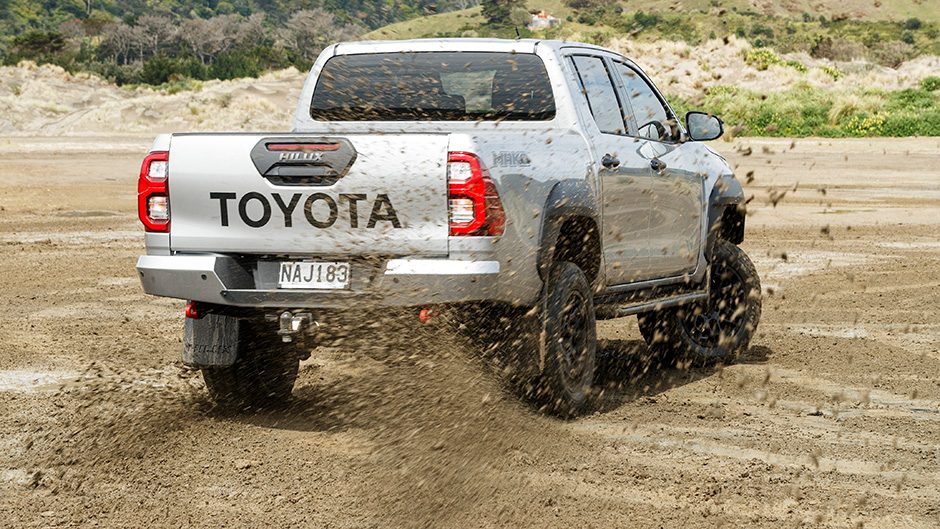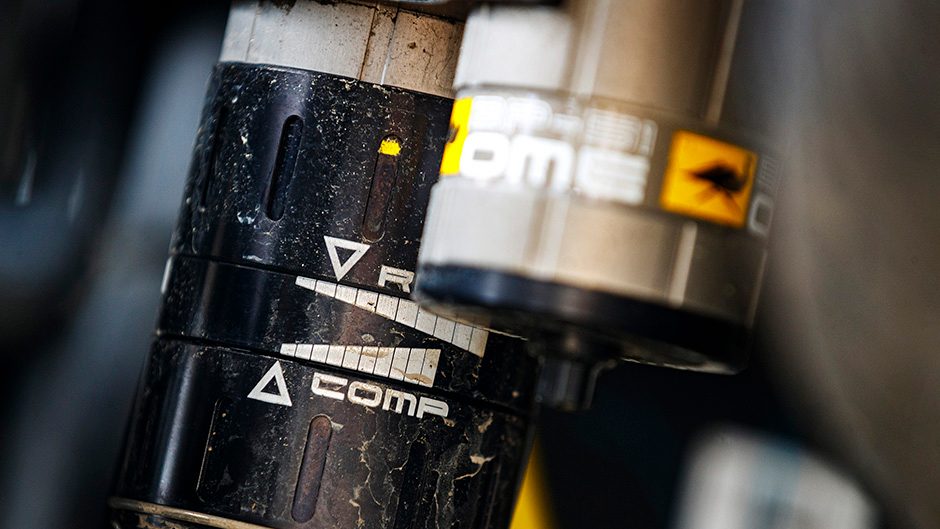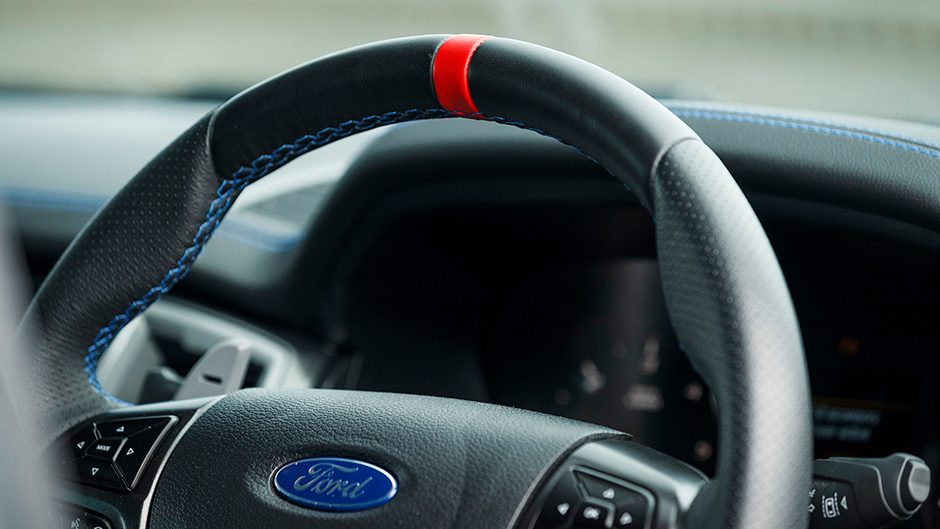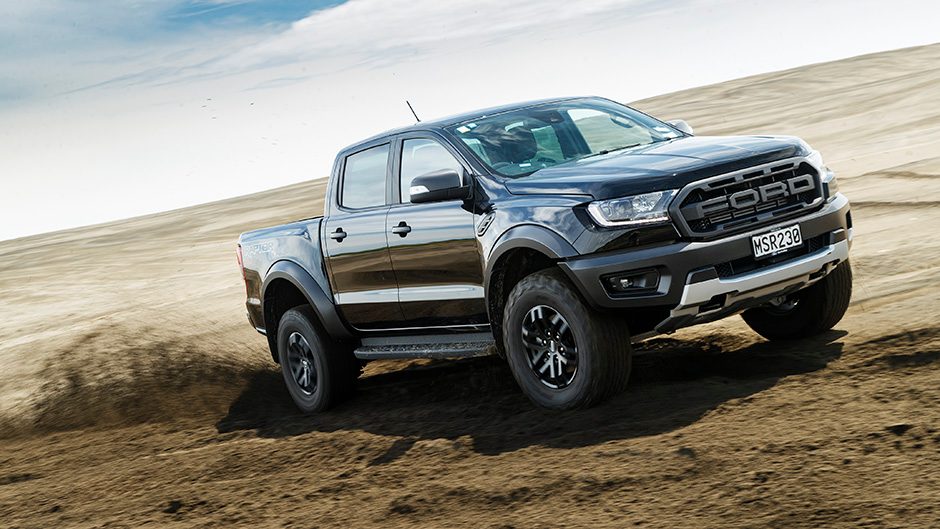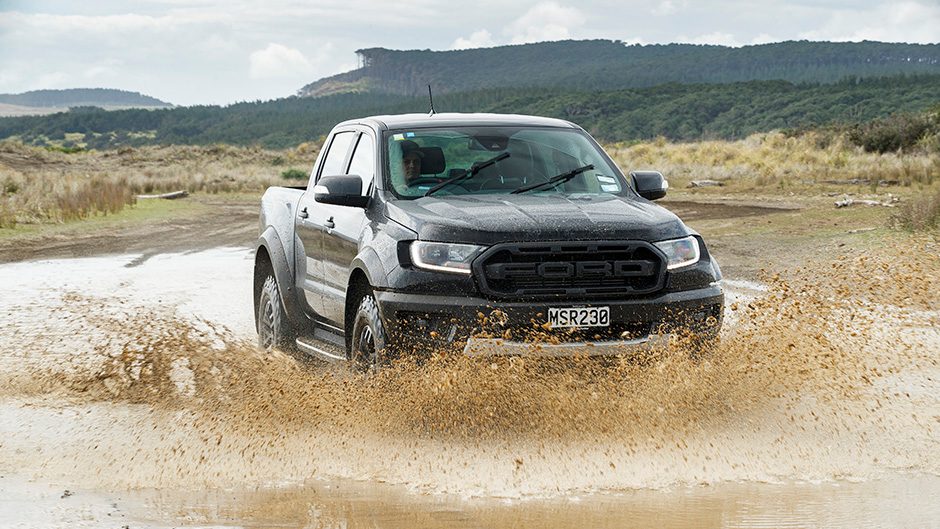2020 Toyota Hilux Mako vs Ford Ranger Raptor comparison
Words Kyle Cassidy | Photos Tom Gasnier
The Toyota Hilux has just had a refresh and topping the new line-up is the Mako. Does it have the teeth to shred the competition?
Last year was a winning one for Toyota’s Gazoo Racing endurance outfit, the victor at Le Mans and conqueror of Dakar. They almost repeated the double again this year, though the Hilux was runner up in the deserts of Saudi Arabia. Toyota’s will to exorcise the beige demons has seen it spend up on racing programmes and inject enthusiasts’ vehicles into its line-up. It’s committed to the new hypercar Le Mans category with a road-going GR Super Sport in an advanced stage of development. Will we see a dune-jumping GR version of the Hilux at any stage? Apparently, yes. Gazoo and Toyota big wigs have confirmed their desire for such a brute. It’s unlikely to offer four-corner independent suspension and a mid-mounted V8 like the Dakar beast, but reports suggest a GR Hilux with a big V6 diesel will happen. It’s still at least two, probably three, years away with the current model having life in it yet, while the V6 is set to debut in the next 300 Series Land Cruiser next year. That’ll see a Hilux with possibly 650Nm and 200kW of force and fury. But three years is a long time to wait while competitors amp things up in the grunt truck stakes, with the likes of the Raptor, Warrior and a few aftermarket specials. And so, headlining the new-for-2020 range of Hilux is the Mako.
This is a locally-devised, built-to-order special, the apex predator Hilux pieced together at Toyota’s Thames Vehicle Operations using parts from the company’s genuine accessories catalogue. Toyota NZ says it has based the truck on customer feedback, Hilux loyalist’s wanting a tough truck but one that didn’t sacrifice ride quality nor premium interior comfort. And it’s not work-shy either with the requisite 3500kg tow rating. The process was said to have been conducted under the ‘careful watch of local Toyota engineers’.
It’s based on the SR5 Cruiser and the Mako gets a set of Black Rhino 18-inch alloys wrapped in Maxxis Razr off-road tyres. Fender flares set off the flanks, while up front is a new steel bumper with a heavy duty item on the rear.
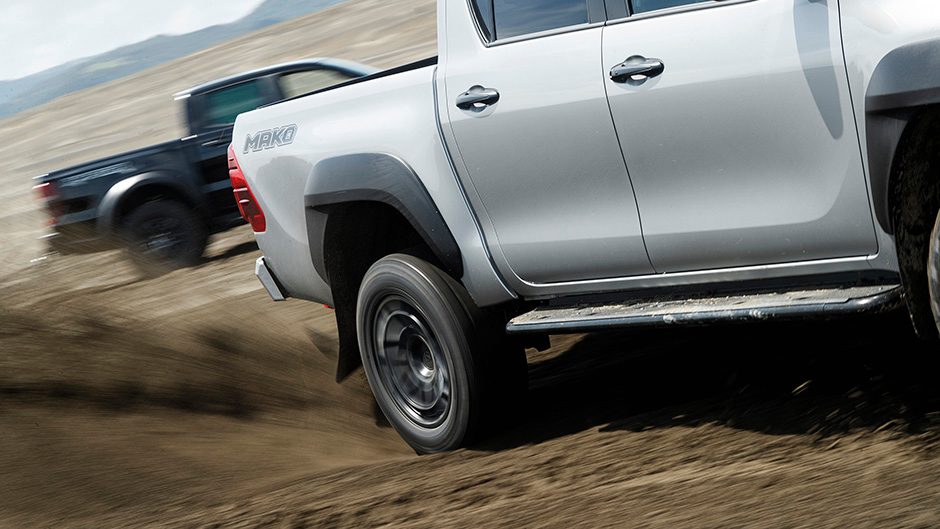
The suspension has been upgraded with ARB’s Old Man Emu BP-51 shockers. These feature bypass damper technology with remote oil reservoirs and also offer adjustable compression and rebound damping control. The brakes are upgraded with larger front discs and stainless steel braided brake lines. Its cabin has been outfitted with leather-covered sports seats and a retrimmed steering wheel. The rest is as per the upgraded Hilux range, the 2.8-litre turbodiesel engine with 150kW and 500Nm, running via a six-speed auto.
If you’re a trucker, the Mako makes the right first impression; the extended ride height sees it loom larger, the blackened alloys encased in the requisite monster truck rubber. Some will be wondering where the 20s are, but we’d suggest Toyota was keen to keep the tyre diameter in line with the donor truck so as not to mess with the stability systems or the final drive ratio. The front bumper integrates well, the gap to the bodywork is not excessive, and the integrated spotties and light bar are a nice touch. The graphics are as subtle as one can expect on such a vehicle.
Mako-specific side steps help you clamber aboard, as it’s a decent vault up into the cabin. The high grip surface of the steps can be vicious on bare legs, likely to shave a bald patch on the back of hairy calves on exit. Seats look racier than they feel, accommodating of a pie-nourished frame though a bit more filling would be nice, along with some lumbar adjust. The Hilux cabin could have been lifted from an SUV, such is the quality, though there are the usual hard bits about. Soft door tops would be on our list as it’s where a ute driver is more likely to rest an arm.
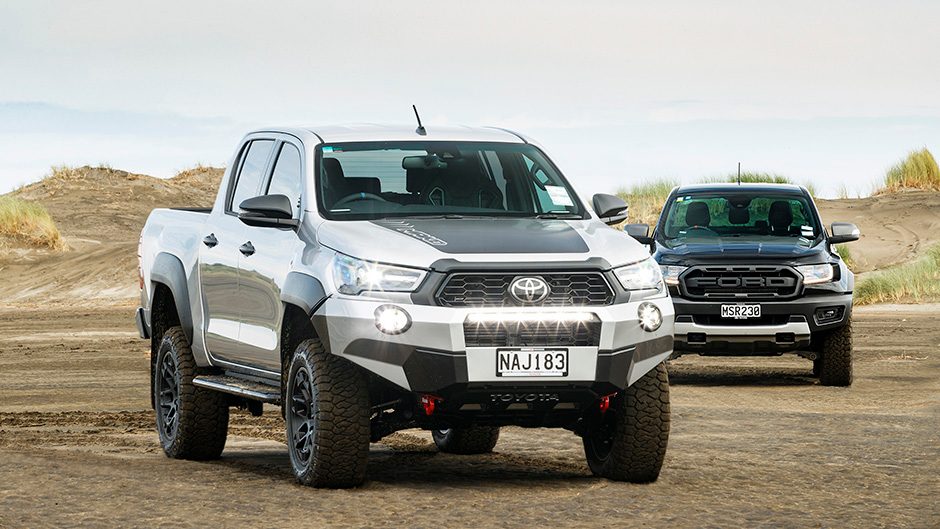
After hitting the Mako starter button, you should immediately prod the PWR switch on the console to unlock a sense of urgency from the powertrain. Makos are the fastest sharks, capable of hitting over 50km/h, so the Hilux version should be quick then. It gets off the mark in capable fashion, feeling pretty brisk in town hunting, but against the clock, the weight of the add ons is telling. Adult Makos weigh around 150kg, whereas this Toyota has more in common with a Whale Shark when heaved onto the scales, coming in at over 2300kg, 200kg more than the donor ute. And so the 0-100km/h sprint takes over 11sec. The rubber provides solid traction for the take off, although it works the ABS harder during the panic stop and, along with the added weight to arrest, the stopping distance was out past 45m, the tail wagging as the nose sniffed out the tarmac.
The Mako rides better than your average Lux, the new shockers helping. These have adjustable rebound and compression settings. If you want to fiddle, there is a special spanner to manually adjust them to your liking.
Compression affects how firm the suspension is when hitting a bump; crank it right up and you’d feel them all as the shock prevents the spring from compressing. On the softest setting, the spring moves freely and you’ll get a gooey soft ride. But you’ll get a shed load of roll to accompany the pitching and diving.

The rebound influences the rate at which the suspension returns to its normal ride height, so cranking that up will slow how fast it bucks back up after a big bump. We didn’t mess with them, but owners should to obtain their desired handling characteristics.
They were set to the softest compression setting, with a couple of clicks of rebound. Mako suffers fewer bumps and shimmies around town and on the highway, though the rear still detects decent dents. It’s quiet in a suspension and tyre sense; those knobblies are respectful of your aural sanity.
Off road, the added clearance and big shockers sees the Mako eat up sizeable bumps and tackle steeper approaches. It runs faster over rough ground than your average Lux would be capable of, without bucking and diving wildly over the ridges and dips, the bump stops untroubled, the cabin less shaken about.
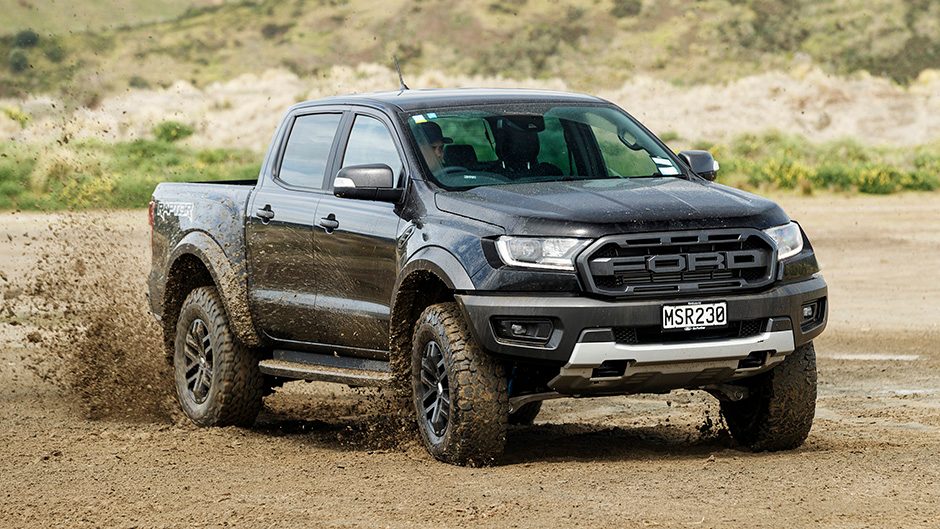
Going for off-road glory comes at the cost of on-road manners. The extra ride height and softer set suspension means the mass in motion has more room to move and squirm. And so with Mako the turn-in is slower, with a moment of roll before it takes a set. The front end you learn to trust. The tyres have an assured amount of grip but offer few clues as to just how good they are in the bend.
Mako rides big dips rather well, soaking up rutted pathways nicely. But the rear axle would benefit from more support; it moves around too much through the bends, leading to a dose of bump steer and the need for a mid-corner steering correction. There is enough grip from the tyres, the traction off the curves sorted, even when the inside wheel is unloaded, while the traction control and ESP don’t get too excited by it all. The brake pedal feels good, with a decent initial bite.
At $79,990 (Toyota’s all inclusive, no haggle pricing scheme in effect), people will naturally ask how does this compare with the $84,990 Ford Raptor, another truck built for the wild life. Mako’s a bit cheaper for a start, with a few more items on the spec sheet, including aspects like radar cruise and more safety minders. For those that tow, the Mako’s 3500kg max rating is 1000 ahead of the Raptor’s.
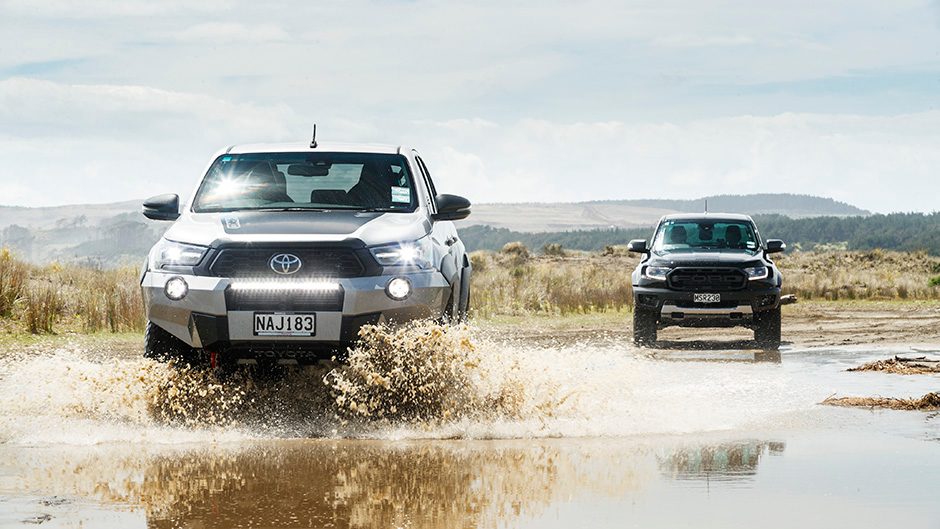
In the cabin, the quality is superior in the Mako, though we prefer the Ford’s infotainment system; it’s easier to fathom and faster to respond. And the Raptor’s seat is comfier. There’s a touch more room in the back of the Ford too, as the big buckets of the Mako rob some of the rear leg room.
While Mako has presence thanks to its lifted look, it can’t match the pumped-up, wide body stance of the Raptor, while the Ford’s wheel and tyre package give it more of a monster truck look.
Raptor’s 2.0-litre pokes a few more horses out than the Toyota’s diesel, but it’s the ten-speed auto, and its rapid shifting, that helps it maintain quicker progress, the Raptor a second quicker over the 100 kay sprint.
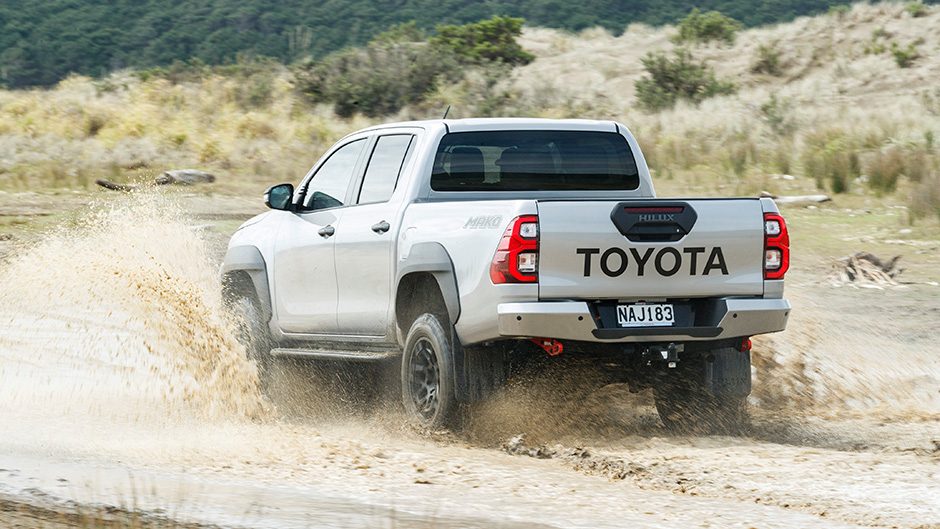
Both have large turning circles, the Hilux slightly better, though the Raptor has easier steering assistance thanks to its electric set-up. The Ford’s extra girth is noticeable in tight car parks, and it lacks parking sensors.
You can’t accuse the Mako of being a dull drive but it’s not as polished as the Raptor. The Ford has a better ride, the rear end both more stable and compliant. Those extra trailing arms, coils and Watt’s link prevent it from wandering and hopping about. This leads to improved steering, Raptor holding a line better, flowing through the turns easier. And there’s more connection via the steering. Off road it has a more controlled progress over the moguls and roughed up ground, getting better as speeds increase. It’s designed and built by Ford Performance with desert racing in mind, and it shows. But at least now the Hilux loyalists have a tough truck to aspire to, with a full factory warranty covering the add ons. It’ll hold the line until that GR lux gets here to kick sand in the face of Raptor.
| Model | Ford Ranger Raptor |
| Price | $84,990 |
| Engine | 1996cc, IL4, TDI, 157kW/500Nm |
| Drivetrain | 10-speed auto, switchable 4×4 |
| Fuel Use | 8.2L/100km |
| C02 Output | 212g/km |
| 0-100km/h | 10.39sec |
| Weight | 2372kg |
| Model | Toyota Hilux Mako |
| Price | $79,990 |
| Engine | 2755cc, IL4, TDI, 150kW/500Nm |
| Drivetrain | 6-speed auto, switchable 4×4 |
| Fuel Use | 7.9L/100km |
| C02 Output | 207/km |
| 0-100km/h | 11.40sec |
| Weight | 2313kg |


